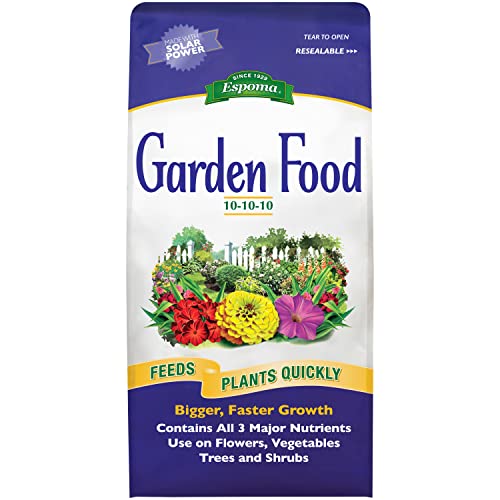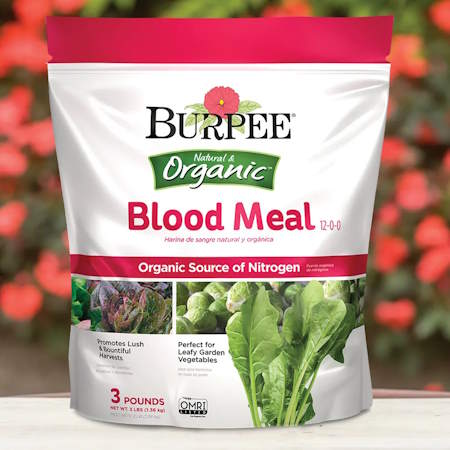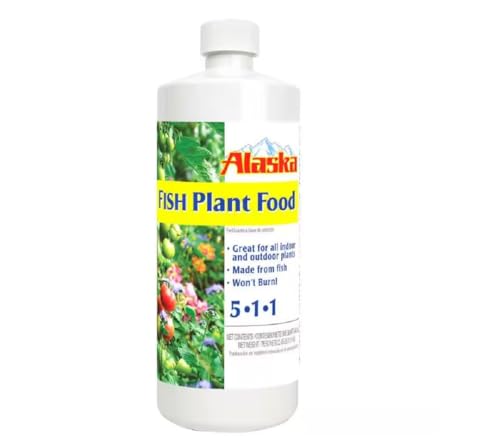How and when to fertilize leeks – plus expert tips for the best feeds to use
Discover the nutrients leeks need and recommended methods of feeding them for a bumper crop
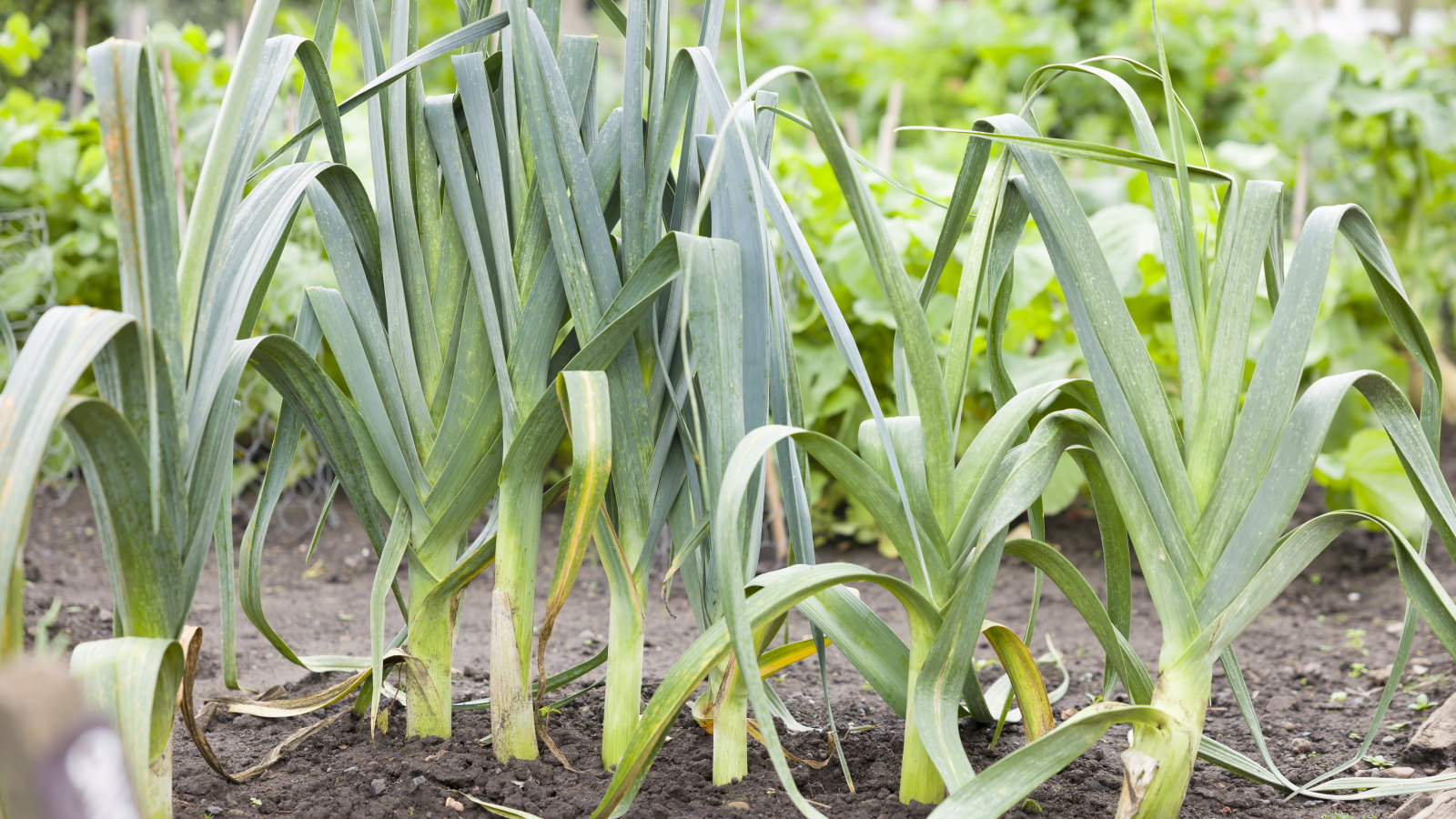

Knowing how and when to fertilize leeks helps you get a fantastic harvest of long and sweet stems. Leeks are simple to grow and have a milder taste than onions, they are versatile enough to be used in all manner of dishes.
While often regarded as a winter crop, growing different varieties of leeks can provide harvests from summer through to spring. Whatever type of leeks you grow, from early varieties to harvest in summer to late types that can overwinter in the ground to be lifted the following spring, they all benefit from being fertilized during the growing season.
I have grown the crop in vegetable gardens for many years and learnt a few things about fertilizing leeks. To help you understand I also hear from an experienced horticulturist about how they fertilize their crop and look at some of the best fertilizers for leeks.
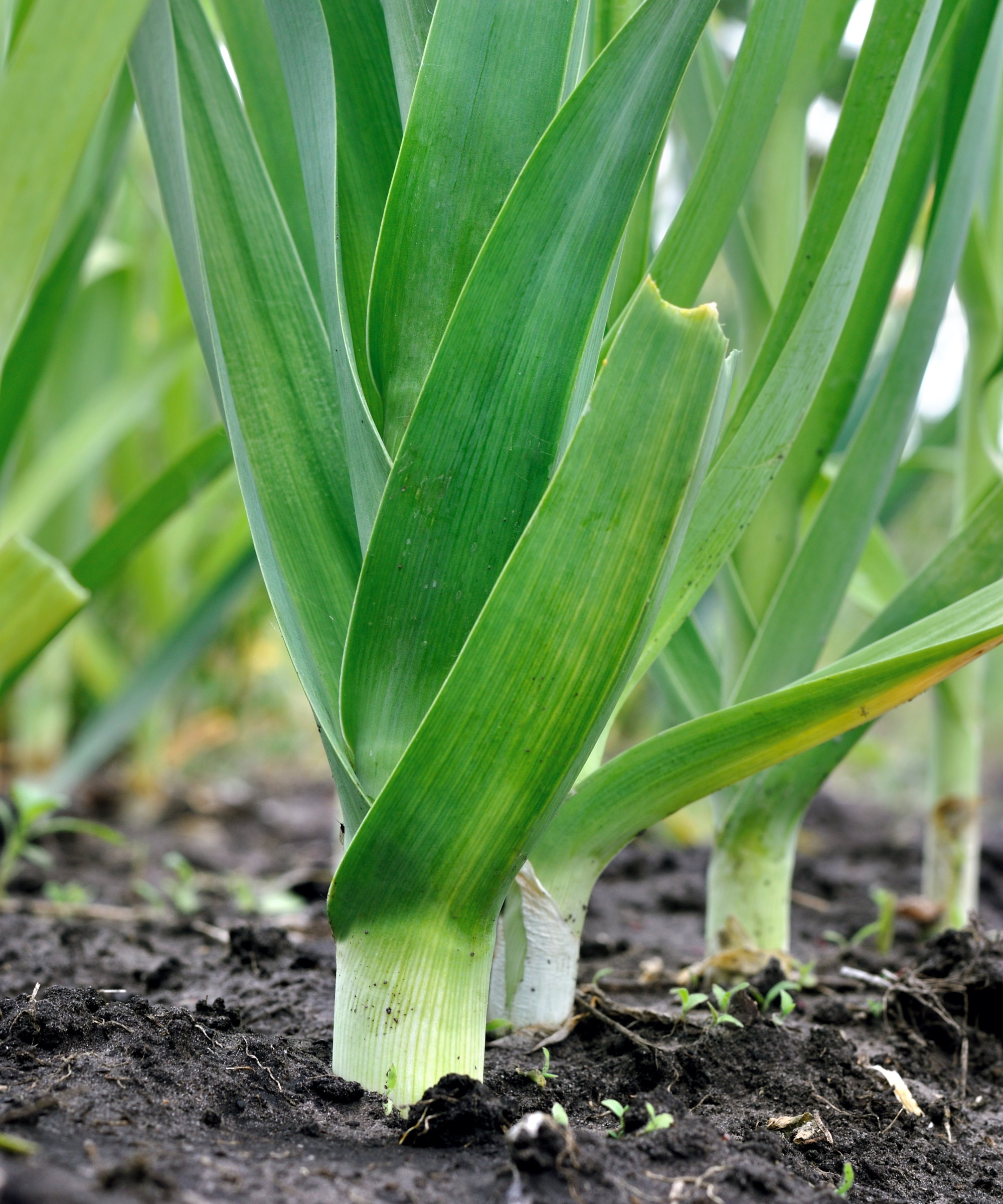
Fertilize leeks at key times in the season when the crop benefits most from lots of nutrients
A guide to fertilizer for leeks
Along with watering plants, fertilizing is the most important maintenance task when growing leeks. We want to help you get it right and get a great harvest, so let’s look closely and when and how to fertilize leeks.
When to fertilize leeks
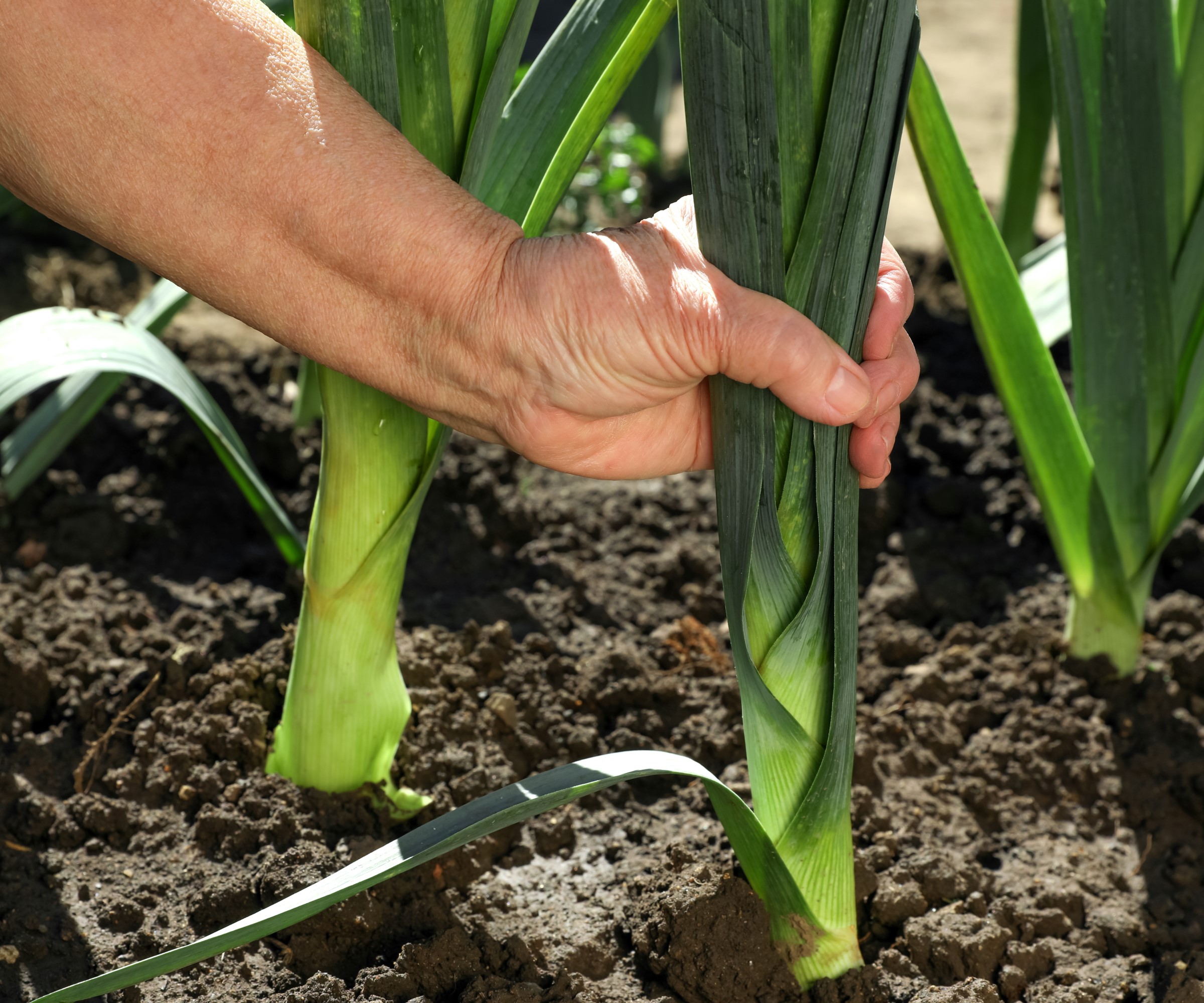
A well-fertilized leek will be ready to harvest when the stem is 1-2 inches in diameter
Leeks can be planted throughout spring. The seeds can be sowed indoors to get ahead in colder climates or directly outdoors in the vegetable garden once the soil is workable.
Leeks need lots of nutrients to grow, including nitrogen, potassium, calcium, and magnesium, and will benefit from feeding at two key moments in the growing season.
Tammy Sons, an experienced horticulturist and CEO and Founder at TN Nursery, says: ‘Nitrogen is the best fertilizer for a successful and hardy-leek crop, hands down.’
Design expertise in your inbox – from inspiring decorating ideas and beautiful celebrity homes to practical gardening advice and shopping round-ups.
‘We fertilize our leeks twice during the growing season: once when planted and once during active growth,’ adds Tammy.
Adding fertilizer before planting the vegetable gets the crop off to a great start. A second feed during the season, in May or June, will help to develop strong stems and reward you with a great leek harvest.

Tammy Sons has decades of experience in horticulture. She is the founder and CEO of TN Nursery, which is recognized as the go-to place for some of the world's largest brands.
How to pick the best fertilizer for leeks
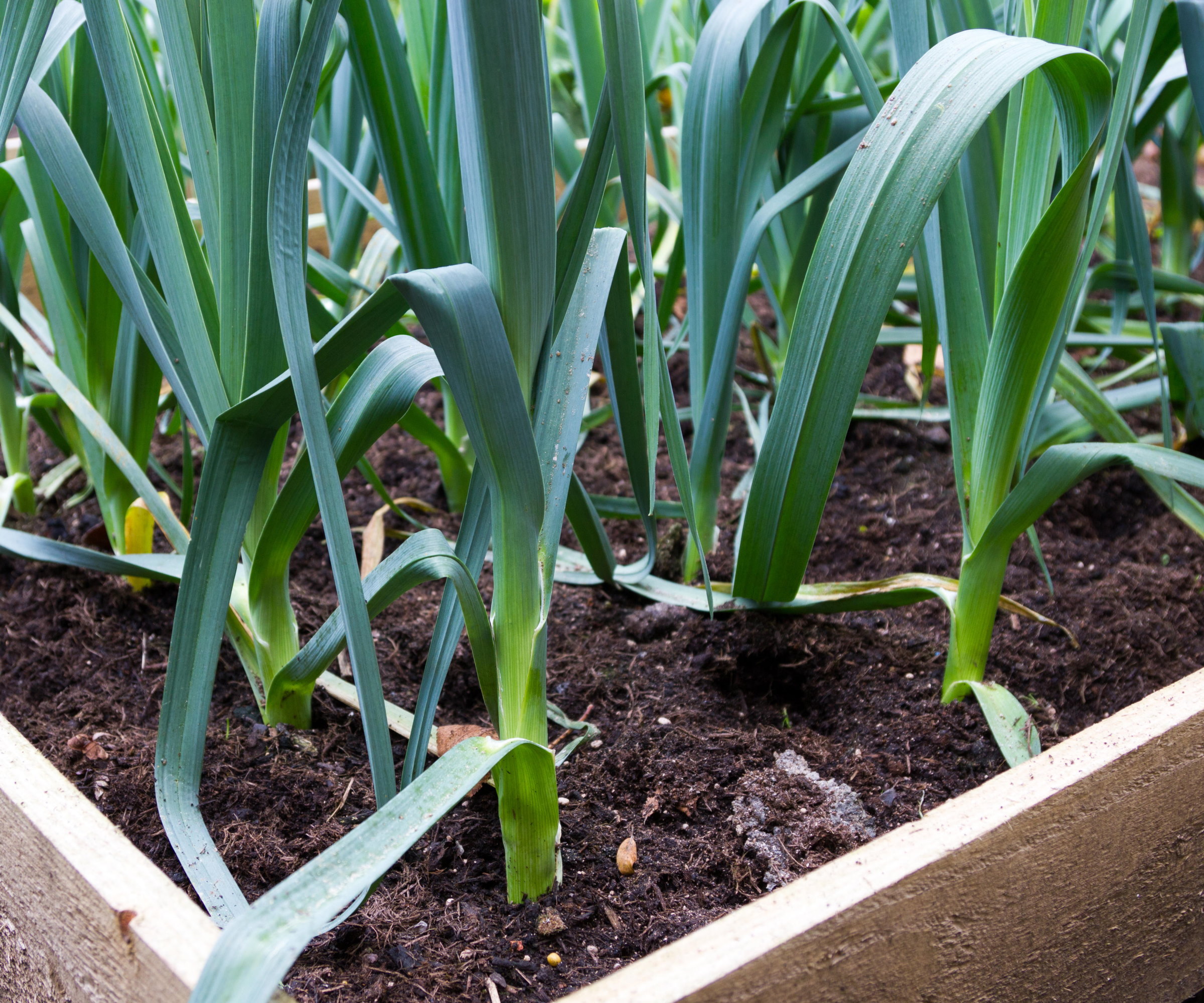
Leeks growing in raised beds and containers may need additional fertilizer
When you use any fertilizer, it is key to understand the plant fertilizer numbers that appear on any product. The packaging will show the nitrogen, phosphorus, and potassium content as a ratio of three numbers, for example, balanced feeds will display a 5-5-5 or 10-10-10 ratio. Knowing the nutrient levels helps avoid over-fertilizing plants or making the fertilizing mistake of applying the wrong fertilizer.
Ahead of planting leeks, adding organic matter such as compost or well-rotted manure provides a solid base of balanced and slow-release nutrients that will benefit when you sow leeks or transplant seedlings into the garden. If you cannot use organic matter before, add a 10-10-10 balanced fertilizer at the time of planting the crop into the kitchen garden.
During the growing season, the leeks greatly benefit from extra nitrogen in the soil. This can be achieved by using high-nitrogen fertilizers such as blood meal, chicken manure pellets, or fish emulsion fertiliser.
Slow-release granular feeds, including blood meal and chicken manure pellets, can be added as a side dressing and one application during the active growing period will suffice.
Liquid fertilizers, such as fish emulsion, are faster-acting. They provide a quick dose of nutrients but leach quickly from the soil - so need to be used more regularly. Liquid fertilizer is mixed in when you water plants and should be added every 3-4 weeks for the best results.
Shop fertilizers for leeks
FAQs
Do leeks like bone meal?
Bone meal is an organic fertilizer rich in nitrogen, phosphorus, and calcium, and can be beneficial when growing leeks. Using bone meal, available at Burpee, would be primarily useful when planting leeks.
Is Miracle-Gro good for leeks?
There are Miracle-Gro products that will benefit leeks. One particular product is the Miracle-Gro Water Soluble All Purpose Plant Food, available at Walmart, which is high in nitrogen and can be applied to plants every few weeks during the season.
Is cow manure good for leeks?
Cow manure is an all-purpose fertilizer and a good source of nitrogen and phosphorus. It can be used to enrich the soil before planting leeks. Any manure needs to be well-rotted before being applied to beds, or added in the fall ahead of planting vegetables in spring. Using fresh manure will burn roots and kill crops.
Onions are another allium that benefit from a dose of extra nitrogen, however, when growing onions it is important to provide that nitrogen at the right time. Unlike leeks, which are grown for stems, onions are grown for the bulbs, so any high-nitrogen fertilizer should only be used to fertilize onions until the bulbs start to form. Feeding the crop too late with lots of nitrogen will encourage the development of the stems rather than the bulb.

Drew has worked as a writer since 2008 and was also a professional gardener for many years. As a trained horticulturist, he worked in prestigious historic gardens, including Hanbury Hall and the world-famous Hidcote Manor Garden. He also spent time as a specialist kitchen gardener at Soho Farmhouse and Netherby Hall, where he grew vegetables, fruit, herbs, and cut flowers for restaurants. Drew has written for numerous print and online publications and is an allotment holder and garden blogger. He is shortlisted for the Digital Gardening Writer of the Year at the 2025 Garden Media Guild Awards.
